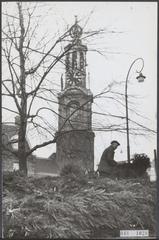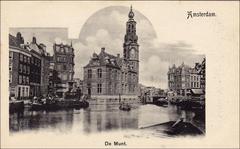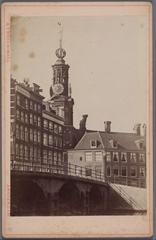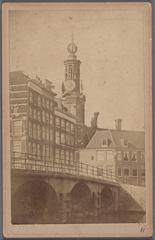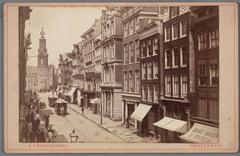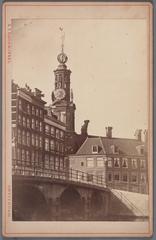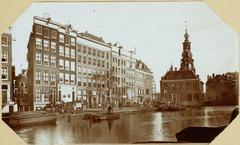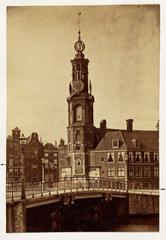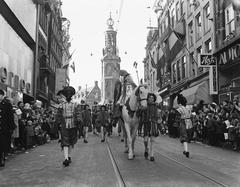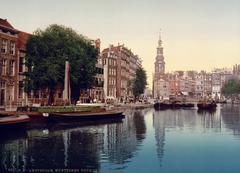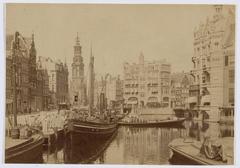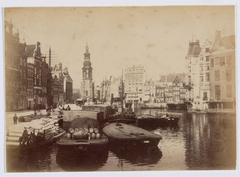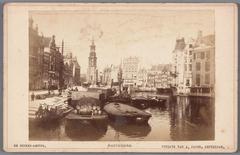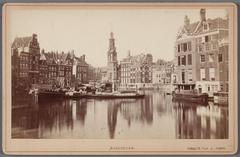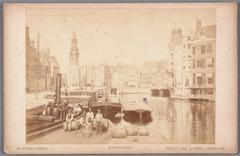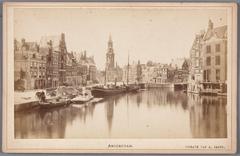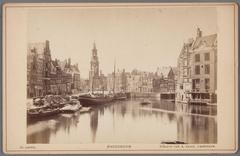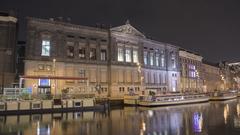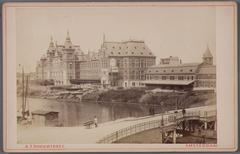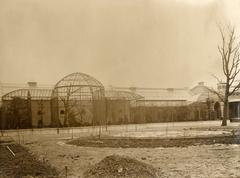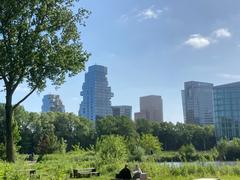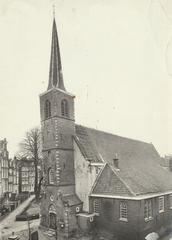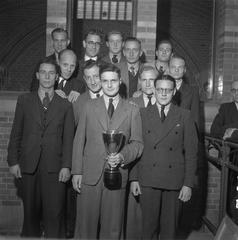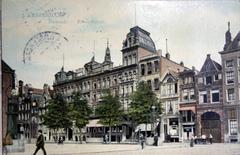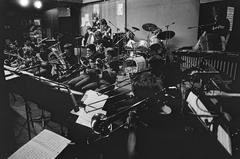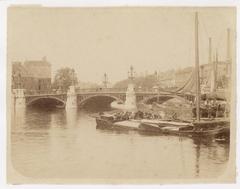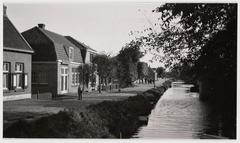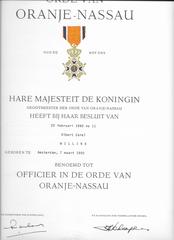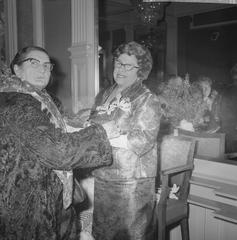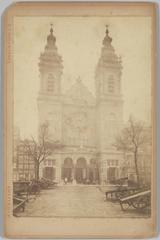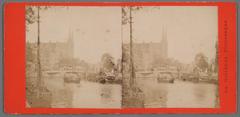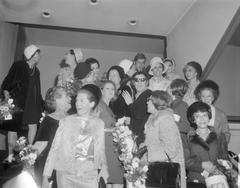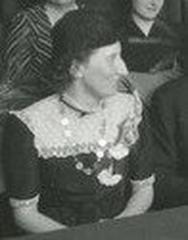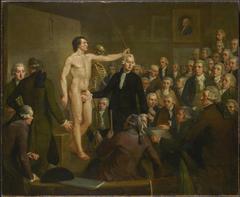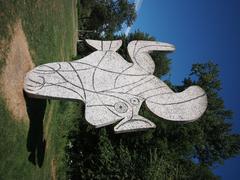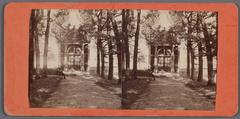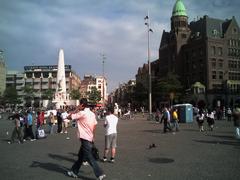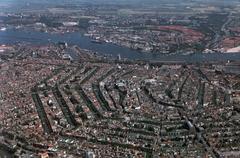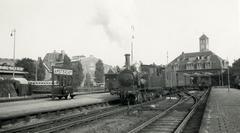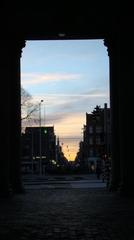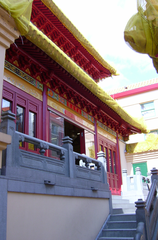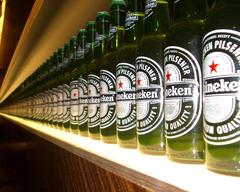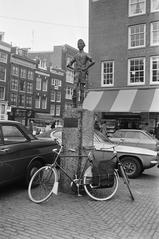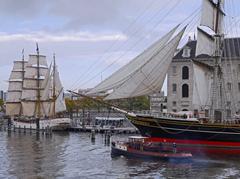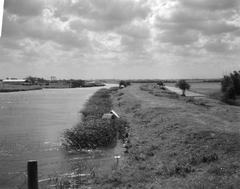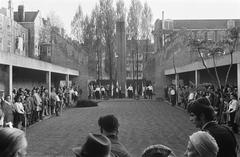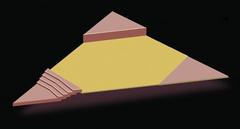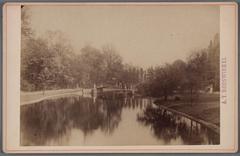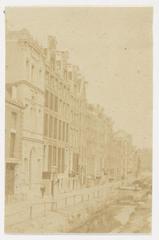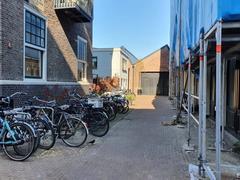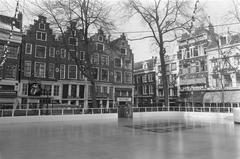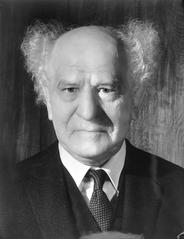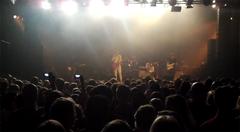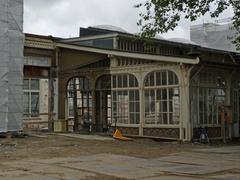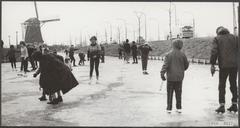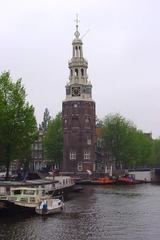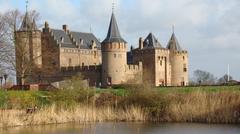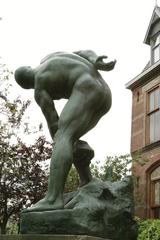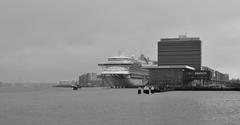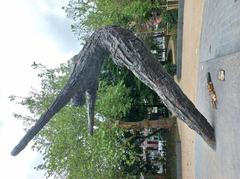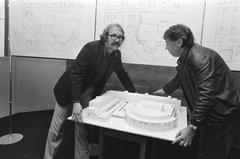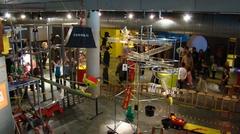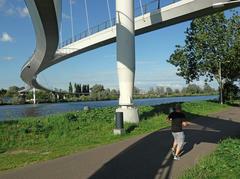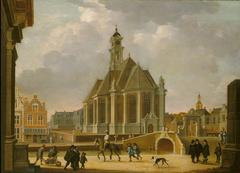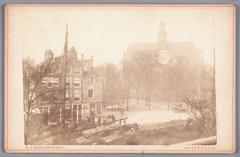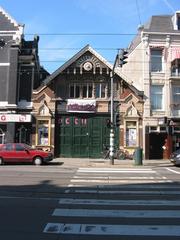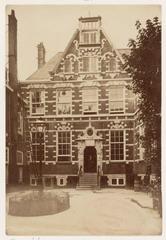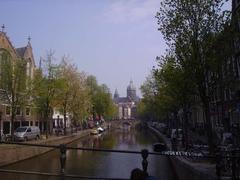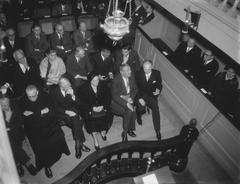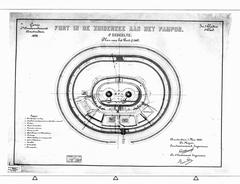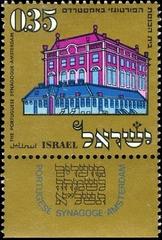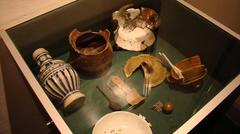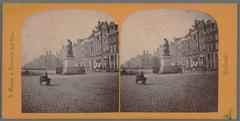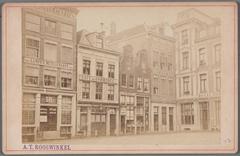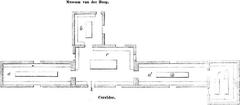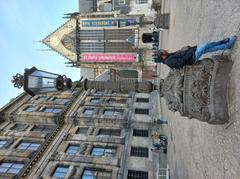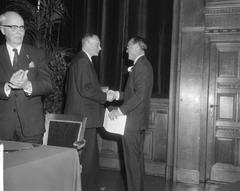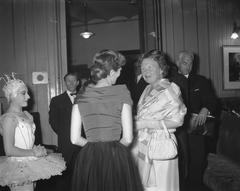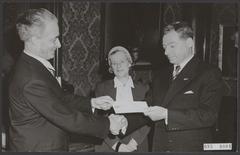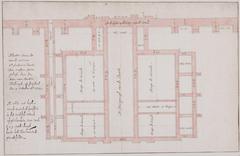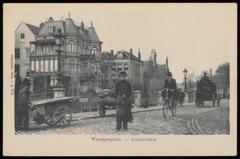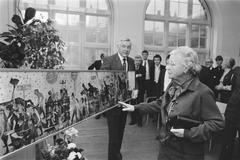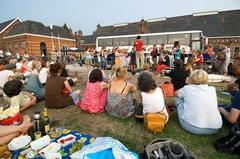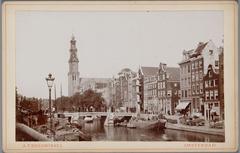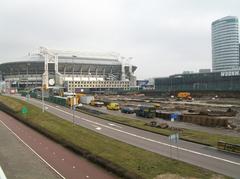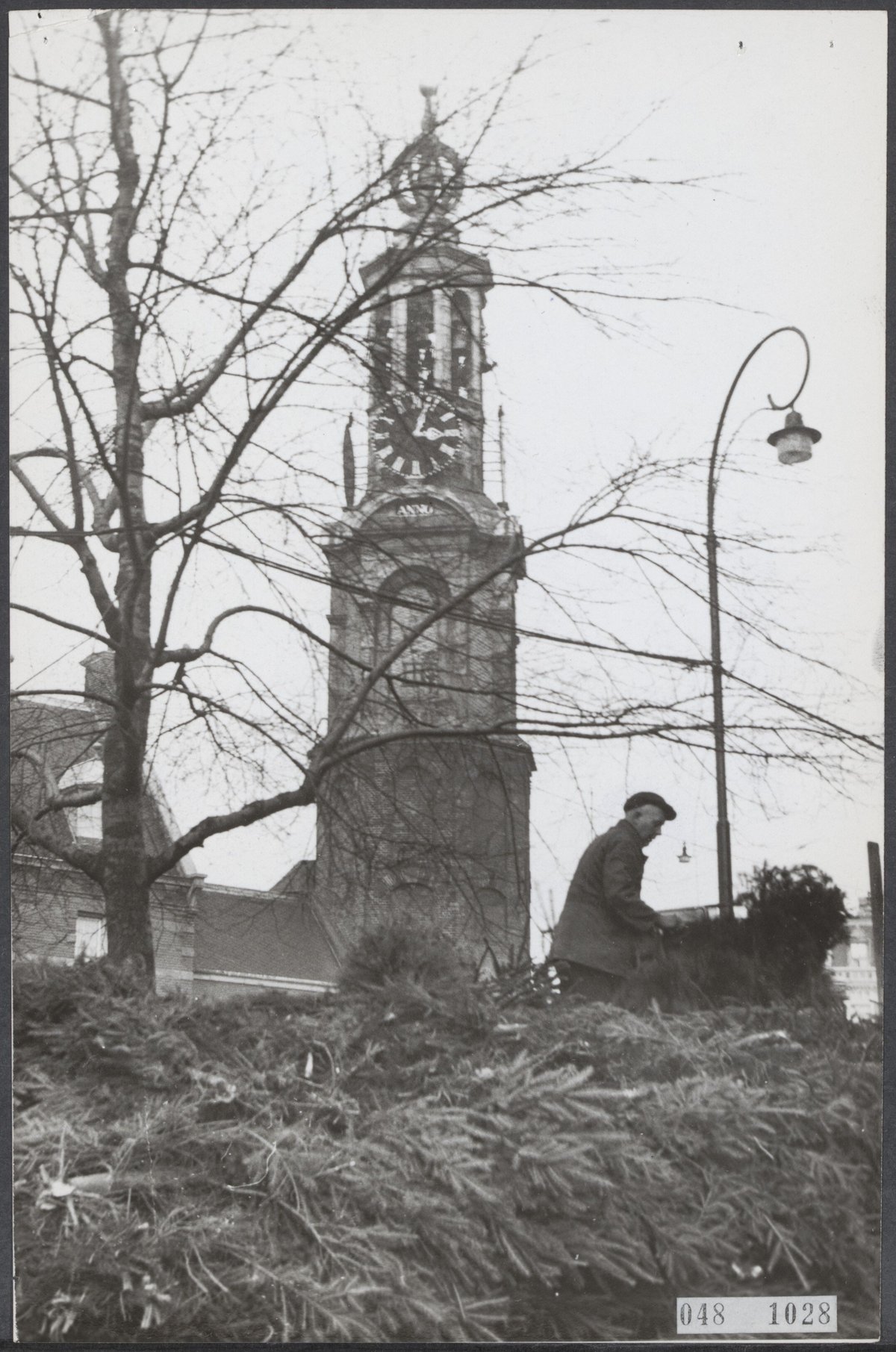
Visiting Munttoren in Amsterdam: History, Tickets, and Tips
Date: 23/07/2024
Introduction
The Munttoren, or Mint Tower, stands as an emblematic beacon of Amsterdam’s rich historical tapestry and architectural prowess. Located at the bustling intersection of the Singel canal and the Muntplein square, this iconic structure has weathered centuries of change and remains a symbol of the city’s resilience and innovation. Originally part of the Regulierspoort gate of Amsterdam’s medieval city wall, the tower’s history dates back to the late 15th century (Amsterdam.info). Over the centuries, the Munttoren has transitioned from a defensive structure to a minting facility, and now serves as a cherished historical monument. This comprehensive guide delves into the Munttoren’s storied past, its architectural significance, and practical information for visitors, ensuring an enriching experience for history enthusiasts, architectural admirers, and curious travelers alike.
Table of Contents
- Introduction
- Origins and Early History
- The Great Fire of 1618
- Reconstruction and Minting Function
- Architectural Features
- Historical Significance
- Visiting Information
- Preservation and Restoration
- Modern-Day Munttoren
- Frequently Asked Questions (FAQ)
- Conclusion
- References
Origins and Early History
The Munttoren’s origins date back to the late 15th century. Initially, the tower was part of the Regulierspoort, one of the three main gates in the medieval city wall of Amsterdam. The gate was constructed around 1480, serving as a crucial defensive structure for the city.
The Great Fire of 1618
A pivotal moment in the history of the Munttoren occurred in 1618 when a devastating fire swept through Amsterdam. The fire destroyed much of the city, including the original Regulierspoort. The only part of the gate that survived was the stone base of the tower. This event marked a significant turning point, leading to the reconstruction and transformation of the tower.
Reconstruction and Minting Function
In 1619, the tower was rebuilt in the Amsterdam Renaissance style, which was prevalent during that period. The new design included an octagonal upper section and a distinctive spire, which remains a defining feature of the Munttoren today. The reconstruction was overseen by the renowned architect Hendrick de Keyser, who played a crucial role in shaping Amsterdam’s architectural landscape.
During the 17th century, the Munttoren gained its name and historical significance as a minting facility. In 1672, the Dutch Republic faced a severe economic crisis due to the Franco-Dutch War. To address the financial turmoil, the government decided to mint coins in Amsterdam. The Munttoren was chosen as the site for this operation, and it functioned as a mint until 1673. The tower’s name, ‘Munttoren,’ which translates to ‘Mint Tower,’ reflects this period in its history.
Architectural Features
The Munttoren is an excellent example of Amsterdam Renaissance architecture, characterized by its elegant design and intricate details. The tower stands approximately 40 meters tall and features an octagonal upper section adorned with decorative elements. The spire, topped with a weather vane, adds to the tower’s distinctive silhouette.
One of the notable features of the Munttoren is its clock, which was installed in the 17th century. The clock mechanism, crafted by the famous clockmaker Claes Noorden, has been meticulously maintained over the centuries. The clock’s chimes have become an iconic sound in the heart of Amsterdam, marking the passage of time for both residents and visitors.
Historical Significance
The Munttoren holds a special place in Amsterdam’s history and cultural heritage. Its role as a minting facility during a critical period in Dutch history underscores its economic and political importance. The tower’s survival through the Great Fire of 1618 and subsequent reconstruction symbolize the resilience and adaptability of the city.
In addition to its historical significance, the Munttoren has also been a witness to various events and changes in Amsterdam over the centuries. It has stood as a silent observer of the city’s growth, from a medieval trading hub to a modern metropolis. The tower’s enduring presence serves as a reminder of Amsterdam’s rich history and architectural legacy.
Visiting Information
Visiting Hours
The Munttoren is open to the public from Monday to Sunday, 9 AM to 5 PM. However, visiting hours might vary on public holidays, so it’s advisable to check the official website or contact the visitor center for the latest information.
Tickets
Tickets for visiting the Munttoren can be purchased online or at the entrance. General admission is €10 for adults, €7 for students and seniors, and €5 for children under 12. Group discounts are available for parties of 10 or more.
Guided Tours
Guided tours are available and provide an in-depth look at the history and architecture of the Munttoren. Tours are conducted in multiple languages, including English, Dutch, and German. It’s recommended to book guided tours in advance, especially during peak tourist seasons.
Travel Tips
- Accessibility: The Munttoren is accessible by public transport, with several tram and bus stops nearby. The nearest metro station is a short walk away.
- Nearby Attractions: The tower is located at the intersection of the Singel canal and the bustling Muntplein square, making it easy to visit other nearby attractions such as the Flower Market, Rembrandt Square, and the Kalverstraat shopping street.
- Photography Spots: The best spots for photographing the Munttoren are from the Muntplein square and the banks of the Singel canal. Early mornings and late afternoons offer the best lighting conditions.
Preservation and Restoration
Preserving the Munttoren has been a priority for the city of Amsterdam. Over the years, several restoration projects have been undertaken to ensure the tower’s structural integrity and historical accuracy. These efforts have involved meticulous research and craftsmanship to maintain the tower’s original design and features.
One of the significant restoration projects took place in the late 20th century. During this period, experts worked to restore the tower’s façade, clock mechanism, and interior spaces. The restoration aimed to preserve the tower’s historical authenticity while ensuring its continued use as a cultural and historical landmark.
Modern-Day Munttoren
Today, the Munttoren stands as a prominent landmark in the bustling city center of Amsterdam. Its central location makes it easily accessible to both locals and tourists, who often stop to admire its architectural beauty and historical significance.
The Munttoren is not only a historical monument but also a symbol of Amsterdam’s enduring spirit. It serves as a reminder of the city’s ability to overcome challenges and adapt to changing times. Visitors to the Munttoren can appreciate its rich history, architectural elegance, and the stories it holds within its walls.
Frequently Asked Questions (FAQ)
Q: What are the Munttoren visiting hours?
A: The Munttoren is open from Monday to Sunday, 9 AM to 5 PM. Check the official website for any changes during public holidays.
Q: How much do Munttoren tickets cost?
A: General admission is €10 for adults, €7 for students and seniors, and €5 for children under 12. Group discounts are available.
Q: Is the Munttoren accessible by public transport?
A: Yes, the Munttoren is easily accessible by tram, bus, and metro. The nearest metro station is a short walk away.
Q: Are guided tours available for the Munttoren?
A: Yes, guided tours are available in multiple languages. It’s recommended to book in advance.
Conclusion
The Munttoren is more than just a historical landmark; it is a testament to Amsterdam’s enduring spirit and architectural heritage. From its origins as a medieval city gate to its role as a mint during the 17th century, the tower encapsulates significant periods of the city’s history. Today, it stands proudly at the heart of Amsterdam, inviting visitors to explore its rich past and admire its Renaissance architectural splendor. Whether you are drawn by its historical significance, its unique architectural features, or simply the enchanting chimes of its clock and carillon, the Munttoren offers a captivating glimpse into Amsterdam’s legacy. As you plan your visit, take advantage of the practical tips and nearby attractions outlined in this guide to make the most of your experience. For further information, be sure to check out the Amsterdam City Archives and the official website of the City of Amsterdam.
References
- Munttoren - Visiting Hours, Tickets, and the Rich History of Amsterdam’s Iconic Mint Tower, 2024 Amsterdam City Archives
- Explore the Munttoren - Visiting Hours, Tickets, and Architectural Marvels in Amsterdam, 2024 I amsterdam
- Essential Tips for Visiting Munttoren in Amsterdam - Best Times, Nearby Attractions, and More, 2024 Amsterdam Tourist Information
